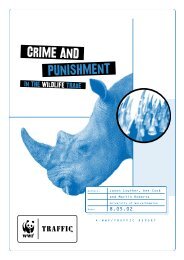In full swing: assessment of trade in orang-utans and ... - WWF UK
In full swing: assessment of trade in orang-utans and ... - WWF UK
In full swing: assessment of trade in orang-utans and ... - WWF UK
Create successful ePaper yourself
Turn your PDF publications into a flip-book with our unique Google optimized e-Paper software.
EXECUTIVE SUMMARY<br />
This report presents an <strong>assessment</strong> <strong>of</strong> the <strong>trade</strong> <strong>in</strong> seven species <strong>of</strong> gibbon <strong>and</strong> two species <strong>of</strong> <strong>orang</strong>-utan on the isl<strong>and</strong>s<br />
<strong>of</strong> Java <strong>and</strong> Bali. Java <strong>and</strong> Bali are the economic, <strong>in</strong>dustrial <strong>and</strong> political centres <strong>of</strong> the Republic <strong>of</strong> <strong>In</strong>donesia. Both<br />
isl<strong>and</strong>s are densely populated, with an average population density <strong>of</strong> around 900 people / km 2 , <strong>and</strong> although small <strong>in</strong><br />
area compared to many other isl<strong>and</strong>s <strong>in</strong> the republic, half <strong>of</strong> the nation’s human population resides on Java <strong>and</strong> Bali.<br />
Several species <strong>of</strong> gibbon <strong>in</strong> <strong>In</strong>donesia, for <strong>in</strong>stance Kloss’ Gibbon Hylobates klossi <strong>of</strong> the Mentawai Isl<strong>and</strong>s or the Javan<br />
Gibbon H. moloch, are threatened by habitat loss, hunt<strong>in</strong>g <strong>and</strong> captur<strong>in</strong>g, as are both the Sumatran Orang-utan Pongo<br />
abelii <strong>and</strong> Bornean Orang-utan P. pygmaeus. S<strong>in</strong>ce <strong>In</strong>donesia’s transition from the autocracy <strong>of</strong> Soeharto to a<br />
democracy, illegal logg<strong>in</strong>g has accelerated <strong>and</strong> <strong>in</strong> large parts <strong>of</strong> the country, forest is be<strong>in</strong>g lost at an alarm<strong>in</strong>g rate. This<br />
puts the survival <strong>of</strong> those species that <strong>full</strong>y depend on forest at risk, <strong>in</strong>clud<strong>in</strong>g all species <strong>of</strong> gibbon <strong>and</strong> both species <strong>of</strong><br />
<strong>orang</strong>-utan. Trade <strong>in</strong> these species, <strong>and</strong> the associated loss <strong>of</strong> <strong>in</strong>dividuals <strong>in</strong> the process <strong>of</strong> captur<strong>in</strong>g <strong>and</strong> <strong>trade</strong>, may<br />
exacerbate these risks.<br />
On Java, <strong>and</strong> to a lesser extent Bali, protected species are widely kept as pets, <strong>and</strong>, despite be<strong>in</strong>g legally protected s<strong>in</strong>ce<br />
1931, gibbons <strong>and</strong> <strong>orang</strong>-<strong>utans</strong> are no exceptions. Given the precarious situation <strong>of</strong> gibbons <strong>and</strong> <strong>orang</strong>-<strong>utans</strong> <strong>in</strong><br />
<strong>In</strong>donesia, <strong>and</strong> the economic importance <strong>of</strong> Java <strong>and</strong> Bali, it was considered imperative to ga<strong>in</strong> a greater <strong>in</strong>sight <strong>in</strong>to the<br />
severity <strong>of</strong> the <strong>trade</strong> <strong>in</strong> these primates, as well as how the <strong>In</strong>donesian conservation authorities <strong>and</strong> local Non-<br />
Governmental Organizations (NGOs), try to curb this <strong>trade</strong>. To this end, data was collected from a variety <strong>of</strong> sources:<br />
bird markets (where despite the name, a large range <strong>of</strong> wildlife species other than birds are <strong>trade</strong>d, <strong>in</strong>clud<strong>in</strong>g gibbons <strong>and</strong><br />
<strong>orang</strong>-<strong>utans</strong>); from the regional <strong>of</strong>fices for the conservation <strong>of</strong> natural resources (data on confiscations, prosecutions, <strong>and</strong><br />
pets that are registered); wildlife rescue centres, rehabilitation centres <strong>and</strong> zoological gardens (as the facilitator for<br />
confiscated <strong>and</strong> donated gibbons <strong>and</strong> <strong>orang</strong>-<strong>utans</strong>); <strong>and</strong> local NGOs (as monitors <strong>of</strong> the <strong>trade</strong>). <strong>In</strong> all, data was collected<br />
on 559 <strong>in</strong>dividuals from at least n<strong>in</strong>e species (249 Hylobates gibbons, 142 Siamangs Symphalangus syndactylus <strong>and</strong> 168<br />
<strong>orang</strong>-<strong>utans</strong>).<br />
<strong>In</strong> the period August-October 2003, surveys were conducted at bird markets (to quantify the <strong>trade</strong>) <strong>and</strong> data were<br />
collected on market surveys conducted by others for the period 1994-2003. <strong>In</strong> all, data was collected from 35 bird<br />
markets <strong>in</strong> 22 cities, represent<strong>in</strong>g 355 market visits dur<strong>in</strong>g 197 <strong>in</strong>dividual months. Data from 2003 total 11 gibbons <strong>and</strong><br />
7 Siamangs, while the total number <strong>of</strong> gibbons encountered at these bird markets <strong>in</strong> the period 1994-2003 was 89. All<br />
seven species <strong>of</strong> gibbon that occur <strong>in</strong> <strong>In</strong>donesia, which are the Javan Gibbon Hylobates moloch, Agile Gibbon H. agilis,<br />
Bornean White-bearded Gibbon H. albibarbis, Müller’s Gibbon H. muelleri, White-h<strong>and</strong>ed Gibbon H. lar, Kloss'<br />
Gibbon H. klossi <strong>and</strong> Siamang Symphalangus syndactylus were at one time or another encountered at one or more bird<br />
markets. Least abundant were the White-h<strong>and</strong>ed Gibbon (H. lar:, 1 <strong>in</strong>dividual) <strong>and</strong> Kloss’ Gibbon (3 <strong>in</strong>dividuals),<br />
whereas the Agile Gibbon (19 <strong>in</strong>dividuals) <strong>and</strong> the Siamang (25 <strong>in</strong>dividuals) were most abundant. <strong>In</strong> 2003, five <strong>orang</strong><strong>utans</strong><br />
were encountered at bird markets, all presumed to orig<strong>in</strong>ate from Borneo, while surveys from the period 1994-<br />
2002 comb<strong>in</strong>ed yielded data on an additional 13 <strong>in</strong>dividuals. There was no relation between IUCN Red List status <strong>and</strong><br />
abundance at bird markets (i.e., the more threatened species were not proportionally more or less <strong>trade</strong>d), nor were there<br />
regional differences <strong>in</strong> abundance <strong>of</strong> the respective species. The number <strong>of</strong> <strong>in</strong>dividuals encountered at bird markets<br />
showed a strong <strong>in</strong>verse correlation with the distance to the species’ orig<strong>in</strong>al distribution range.<br />
For all species, the prices <strong>of</strong> <strong>in</strong>fants were considerably higher than those <strong>of</strong> adults. Prices <strong>of</strong> the different species <strong>of</strong><br />
gibbon differed only slightly, with an average requested price <strong>of</strong> USD88±44 (IDR750,394±375,197 at 2003 rates), n=24.<br />
The two rarest species (Javan <strong>and</strong> Kloss’ Gibbon), however, were approximately 20% more expensive than the other<br />
gibbons. Siamangs were considerably more expensive than the smaller species <strong>of</strong> gibbon (USD157±48<br />
, n=11), <strong>and</strong> Bornean Orang-<strong>utans</strong> were yet more expensive (USD406±48<br />
IN FULL SWING:ASSESSMENT OF TRADE IN ORANGUTANS AND GIBBONS ON JAVA AND BALI,INDONESIA<br />
v


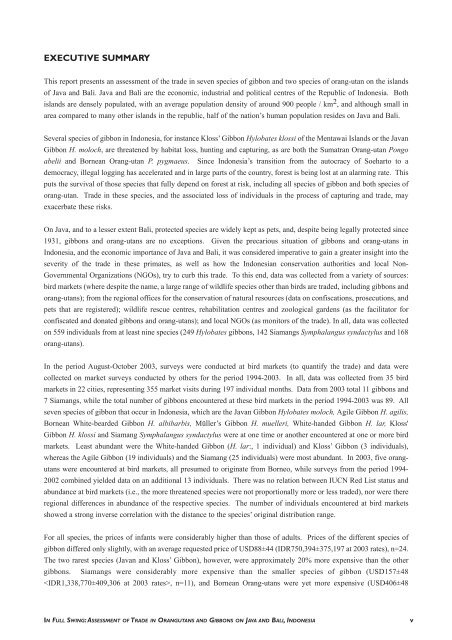
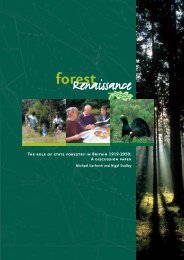
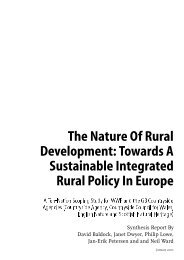
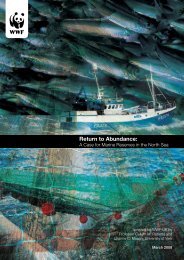

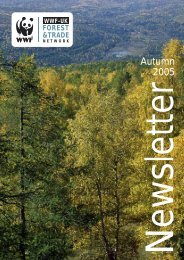

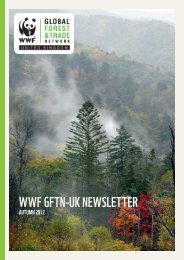
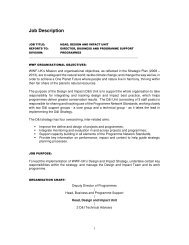
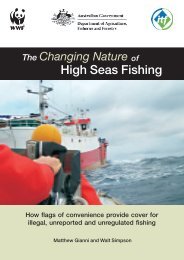
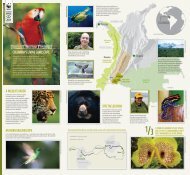
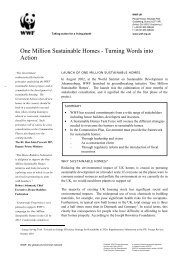
![[PDF] Causes for concern: chemicals and wildlife - WWF UK](https://img.yumpu.com/31929970/1/184x260/pdf-causes-for-concern-chemicals-and-wildlife-wwf-uk.jpg?quality=85)
